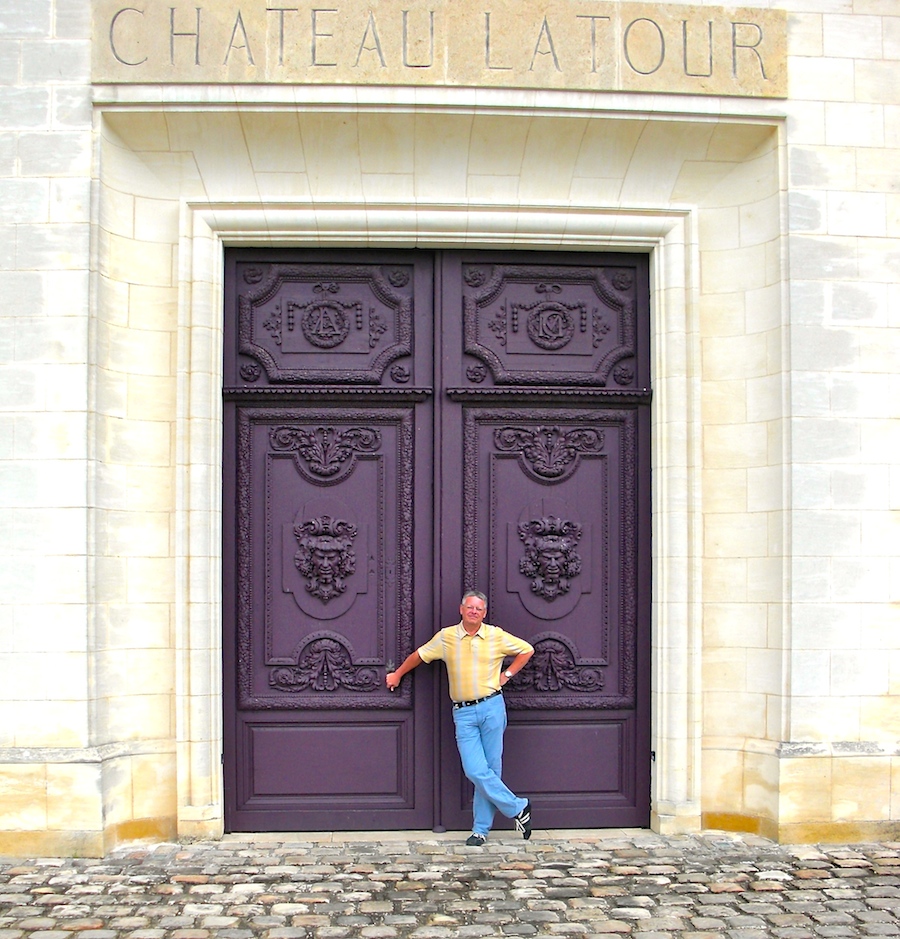
Sweet dreams are made of this
Who am I to disagree
I travel the world and the seven seas
Everybody’s looking for something
Don’t you just love Annie Lennox and her sultry/soulful voice on this classic Eurythmics tune? We can all relate, right? Aren’t we all looking for something? And some of us have even travelled the world searching for it. As Lennox says, it’s what dreams are made of.
You can have your beautiful sunny beach in a tropical paradise; go ahead and imagine that big shiny red Ferrari; Leafs win Game 7 of the Stanley Cup final? It’s all yours, friends, dream on.
My dream, the one that played out all those many nights, was finding myself standing on the hallowed ground of the greatest wine estate on the planet: Bordeaux’s Chateau Latour, in the heart of Pauillac, the holy grail of all things wine.
Oh, how it haunted me; I ached so hard just be there, inside those historic walls, inhaling the raw, pungent fumes of Latour’s fermenting grapes, running my hands all over those spanking new French oak barrels.
And then, on July 10, 2010, there I was at the iron gates of Latour. My dream was about to unfold right before my very eyes.
Bit of a letdown, to be perfectly honest.
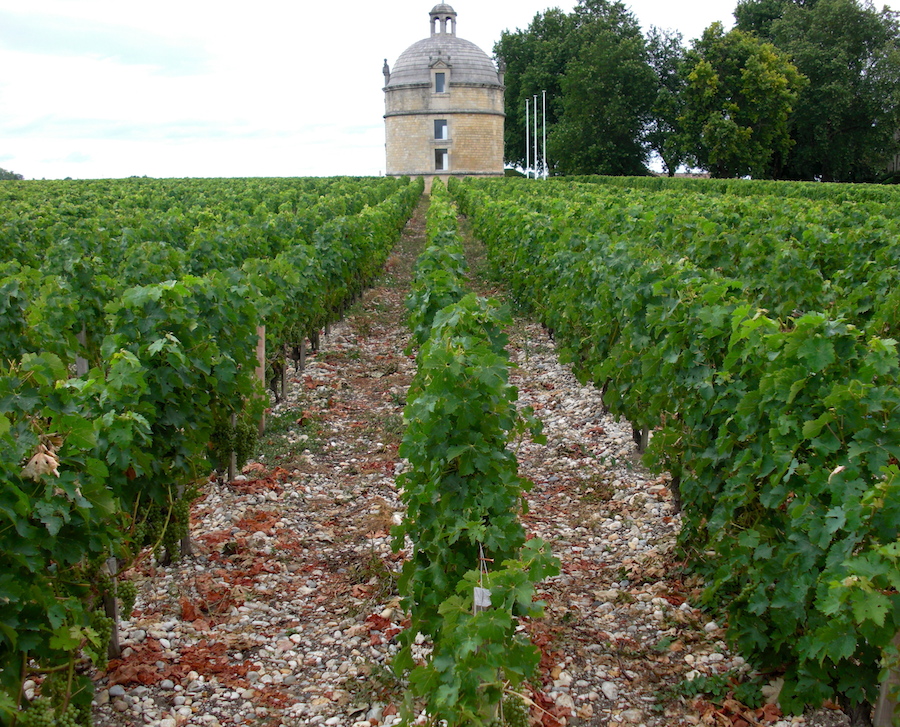
First of all, that famous graphic on the label, you know, the Tower of St. Lambert, the one with the majestic lion straddling the crown and watching ferociously over the vineyards? It’s not there anymore, and it hasn’t been for over 500 years after being burned to the ground during one of the many bloody conflicts in the region and was replaced (less remarkably, I have to say) with a pigeon house in the 1620s, which is still there sitting off in the distance, and not nearly as majestically. And no fair maidens bringing in basket after basket of hand picked plump, juicy grapes, either, like I imaged in my dreams. Damn.
Today, Chateau Latour, the working winery, is a sprawling, high-tech, modern-day wonder. It is spotlessly clean, efficient and spacious with computers controlling the temperature of 66 stainless steel tanks housing the various parcels of Latour fruit before they head to the barrel room for aging.
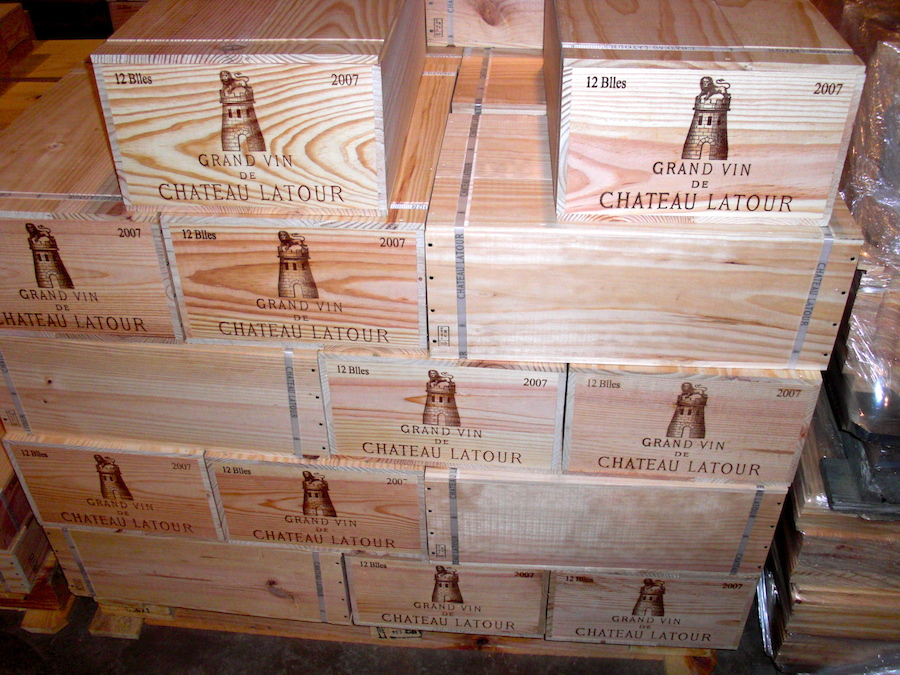
It’s a bit of a buzz kill to finally get to Latour, one of the most famous estates in the world, and find everything so perfect and clean and, well, modern, until … (drum roll)
… you taste the wine. Then it’s: Mind. Blowing. Time.
The blend for the near-perfect 2009 vintage is 91.3% Cabernet Sauvignon and the rest Merlot.
There are predictions that this super-concentrated wine will survive 100 or more years in bottle. Think about that! 100 years. Certainly, based on colour alone, an opaque, inky, purple, it looks visually stunning. The aromas in the glass are jaw-dropping — sweet currants, blackberry, cocoa, oak, layers of stony minerality, and spice.
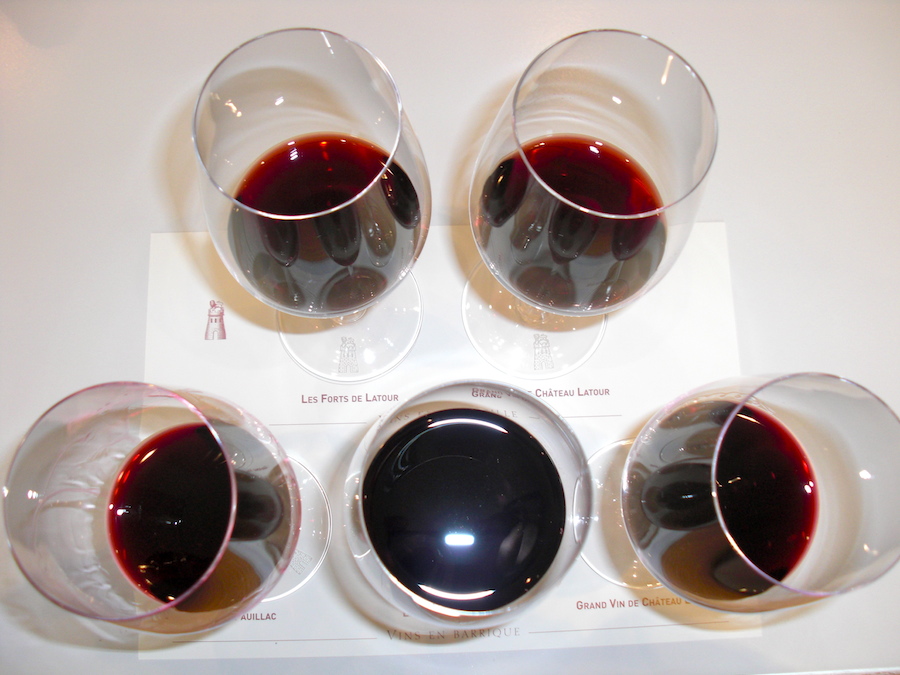
It is enthralling on the palate, even at this early stage from barrel, with a powerful frame, highly extracted black fruits, layered, textured and built on pure power. It is a monumental wine, to be sure, vying with the legendary 1961, 1982 and 1990 as the best ever.
It is in Bordeaux, where only five grape varieties (Merlot, Cabernet Sauvignon, Cabernet Franc, Petit Verdot and Malbec) are permitted in red blends (Semillon and Sauvignon Blanc in white blends), that the style for full-bodied, powerful, long-lived wines was nurtured over centuries and desired by wine lovers the world over. There are few wine regions on Earth that don’t try to capture that same magic with their own version of the “Bordeaux-style” crafted from their unique climates.
And why not?
Bordeaux commands some of the highest prices in the world and has always been a benchmark for others to strive. And if you can’t grow your grapes in Bordeaux you can certainly grow the same grapes and use the same techniques as the Bordelais do, and even add a twist or two of your own.
It is 6,061 kilometres from Pauillac, in the heart of Bordeaux, to the St. Davids Bench, in the heart of Niagara. One is a kindred spirit to the other, one barely knows the other exists.
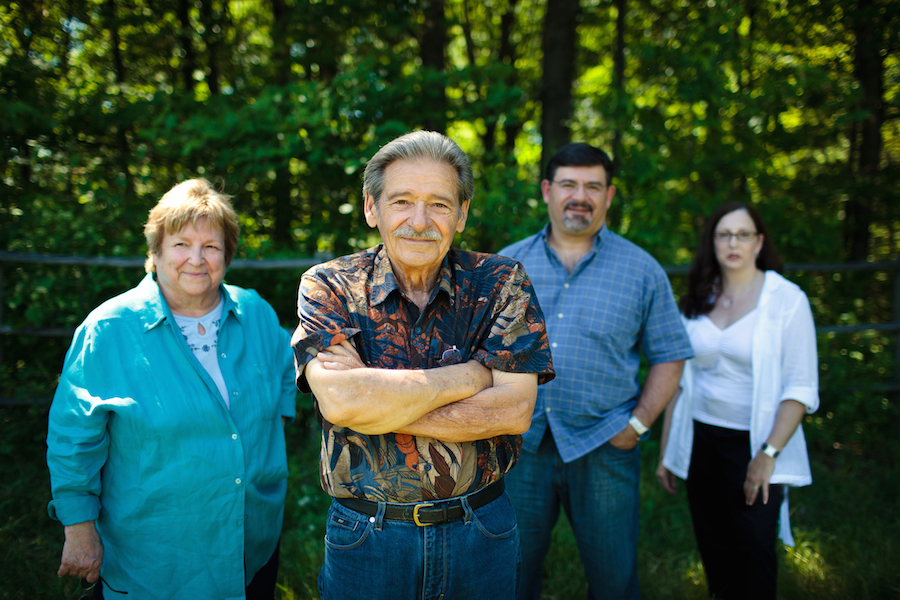
Paul Bosc, Algerian by birth, is an early pioneer of Niagara and co-founded Chateau des Charmes in Niagara-on-the-Lake in 1978 after arriving in Canada and working at his first job in Toronto at Chateau Gai.
Bosc was convinced the Canadian wine industry needed to re-position itself as a world-class winegrowing region and planted this country’s first commercial vineyard dedicated exclusively to European vitis vinifera grape varieties.
Bosc planted grapes that would make wine the world wanted to drink: Burgundy and Bordeaux were the inspiration.
“And if it’s a Bordeaux blend well, you know, what is a Bordeaux blend? It’s something that tastes like one of the best Bordeaux. It’s simple,” Bosc says.
“I wanted to make our wines in the classic style, what those wines should be. If you make a Bordeaux, it should taste like a Bordeaux.”
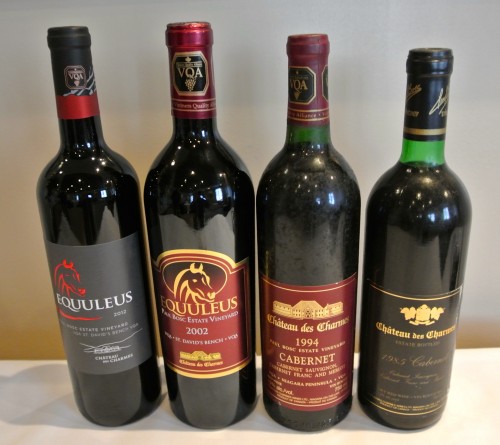
I tasted four decades of Chateau des Charmes’ top red blends with Bosc and you can see the evolution of these wines in a style that closely resembles Bordeaux in how they age and develop over time.
The 1985 blend of Cabernet Sauvignon, Merlot and Cabernet Franc was perhaps over the hill, but the 1994 Paul Bosc Vineyard blend was still going strong with lovely integrated fruits and spice. The 2002 Equuleus, the name of the top wine made at the estate only in the best vintages, is beautiful now but I remember it as a heavily a tannic wine that was nearly unapproachable just five years ago.
The 2012 Equuleus is the most approachable top wine from this estate I have tasted but is still jam-packed with ripe fruit and supple tannins in a more modern style, yet constructed with a Bordelais feel to it.
“We have to take what the terroir gives us here and run with it,” Bosc says. “My vision is to compete with the best wines in the world, you have to be the best in the world.”
Bosc is not alone with this inspiration. Other early pioneers in Niagara were quick to plant the classic Bordeaux grapes in Ontario along with the Burgundy varieties of Pinot Noir and Chardonnay and, of course, Riesling. They all had the same desire: To be like Bordeaux, to be like Burgundy, to be like Germany. It was all they knew.
It was no different in Canada’s other emerging wine region of the Okanagan Valley.
In today’s wine industry, the nod to Bordeaux might not be as obvious as wineries strive to put their own Canadian identity on their wines, with proprietary names and subtle additions to their classically-style red blends, but they wouldn’t be insulted if you told them their wine tastes a lot like Bordeaux.
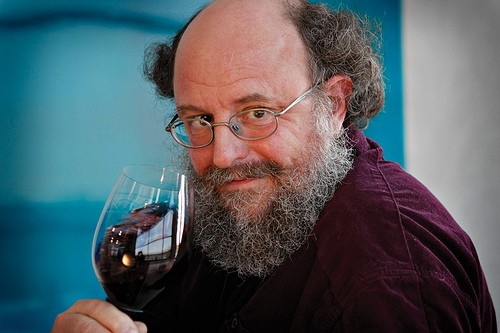 Stratus Vineyards in Niagara-on-the-Lake, with its French-born winemaker J.L. Groux, a native of the Loire Valley who studied winemaking at the University of Bordeaux, is a mirror of the Bordelais style.
Stratus Vineyards in Niagara-on-the-Lake, with its French-born winemaker J.L. Groux, a native of the Loire Valley who studied winemaking at the University of Bordeaux, is a mirror of the Bordelais style.
“The model of the winery was built on the Bordeaux philosophy,” explains Suzanne Janke, Stratus’s director of sales and hospitality. “We build the top wine and trickle down from there.”
The top wines, Stratus Red and Stratus White, are constructed from the very best grapes and parcels produced at the winery. The red is usually a classic blend of Bordeaux grapes but can also have some Syrah or other non-Bordeaux grapes in the blend, especially in cooler vintages. It’s the same with Stratus White with Sauvingnon Blanc and Semillon often getting a shot of Chardonnay, Viognier or something else blended in. But the goal is to have the complexity and depth of Bordeaux.
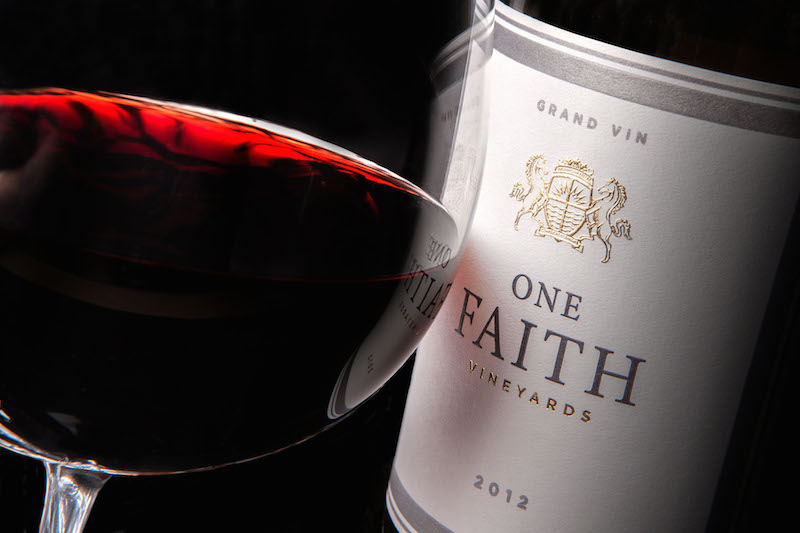
In B.C., where the climate is warmer and some would say more suited to the Bordeaux varieties (in Niagara, the top Bordeaux style wines are generally best in the warm vintages such as 2012, 2010, 2007 etc.), at least two wineries dedicate themselves to only a Bordeaux-style red blend — Osoyoos Larose and the new One Faith Vineyard.
In 1998, Groupe Taillan of Bordeaux and Constellation Brands partnered with a vision to create a world-class Canadian wine from classic Bordeaux varietals.
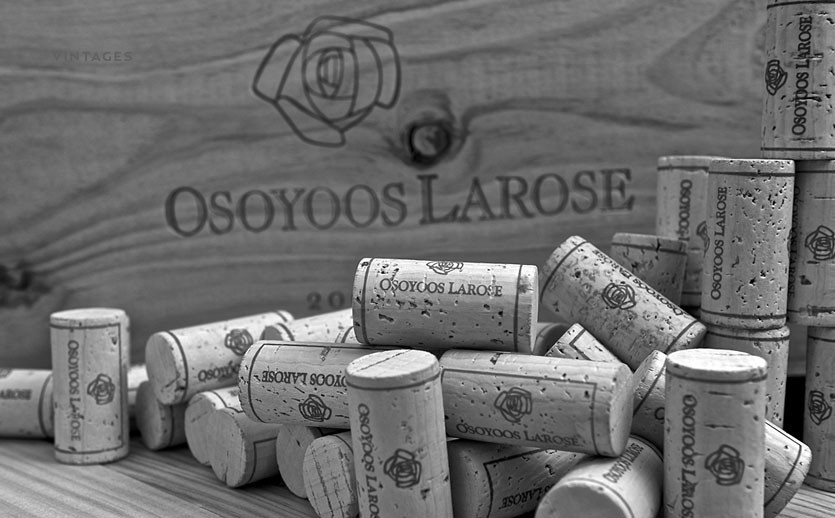
The union of centuries-old winemaking traditions and New World was consummated on an arid, west-facing, 80-acre bench overlooking Lake Osoyoos in the South Okanagan. That first vintage in 2001 solidified its place as one of the most consistent Bordeaux-style wines in the country.
One Faith Vineyard, which makes no bones about its desire to be thought of as a “First Growth” (see the post here about the controversy about that self-proclamation) in Canada, debuted with the bravado to back up its claim, but it rankled more than a few for its brash comparison to the greatest properties in Bordeaux.
But here’s the thing. Call it what you want: Meritage, Cabernets, Cab-Merlot, First Growth, Equuleus, La Brunante (Hidden Bench), Hypothesis (Culmina), Poetica (Southbrook), or dozens of other proprietary names, the end game is the same: To make fabulously rich and full-bodied red wines that have complexity and staying power. If it makes you think of Bordeaux, well that’s just gravy.
A selection of Bordeaux-style reds and whites from Canada
Red blends
94 Stratus Red 2012, Niagara ($44)
A remarkable blend of 29% Cabernet Sauvignon, 26% Merlot, 26% Cabernet Franc, 13% Petit Verdot, 3% Malbec and 3% Tannat that chimes in at a respectable 13.8% alcohol. Off the top, no red wine at Stratus can top this in any vintage, it is the culmination of all the hard work that has gone into the top-down program at the slick and stylish Niagara winery. The nose, even in its youth, shows dense and highly aromatic black currants, blackberries, plums, cassis and then oak spices, clove-cinnamon notes and charred vanilla toast. It is so lush, so brooding on the palate, yet it is defined by the richness and purity of the dark layered fruit that is bolstered by lavish spice, grippy tannins and a finessed feel through a long, velvety finish. It is big, no doubt about it, at this stage, but has the power, complexity and grace to reward with 10-20 years in the cellar. A beautiful wine.
93 Southbrook Vineyards Poetica Red 2012, Niagara ($55)
This is a classic blend of Cab Sauv, Cab Franc, Petit Verdot and a touch of Merlot. Such a wonderful and expressive nose of rich, meaty blackberry, cherry and a complex array of oak spices. This has structure and grip with lovely red and dark fruits that build on the palate and meld with an array of spices and firm tannins.
93 Culmina Hypothesis 2012, Okanagan ($44)
This is only the second vintage of this top red blend from Donald Triggs’ Okanagan project that combines Merlot, Cabernet Sauvignon and Cabernet Franc. And what a beauty! Dark and rich in the glass with opulent aromas of black currants, concentrated blackberries, red plums, an array of oak-enriched spices and a touch of eucalypt. It’s big and powerful on the palate and highlights persistent dark fruits, plush tannins, and spices all delivered on a long, lush finish. Such depth of flavour yet finessed and polished.
93 Chateau des Charmes Equuleus 2012, Niagara ($40)
The flagship red from this estate is always a blend of 50% Cabernet Sauvignon and 25% of both Cabernet Franc and Merlot that’s made only in the warmest vintages in Niagara. This is the best Equuleus yet, a more modern style that’s approachable now yet will age for 10-20 years. The nose shows rich cherry, a touch of raspberry and then lavish cassis, concentrated black currants and fine oak spices. It is smooth on the palate with generous fruit flavours, fine tannins and integrated spices that echo on the long finish.
92 Daniel Lenko Meritage 2010, Niagara ($60)
A big, bold and long-lasting red that needs time to settle down to merge all the moving parts. This is well on its way with a beautiful nose of earthy black currants, cassis and blackberry fruits that show concentration and smothered in lavish oak spices and campfire smoke. The flavours on the palate range from cassis and currants to licorice, anise and vanilla oak.
92 Township 7 Reserve 7 2012 , Okanagan ($36)
This blend of mostly Merlot with bits of Cab Sauv, Malbec, Cab Franc and Petit Verdot has a lot going for it with a lovely nose of black cherry, cassis, currants, swirling oak spices, black olives, leather, cedar and spice. It’s juicy and rich on the palate with dominant cherry fruit, some bramble, currants, anise, licorice and integrated spice notes.
91 Hidden Bench La Brunante 2011, Niagara ($75)
This is the flagship Bordeaux style blend from Hidden Bench and contains 56% Merlot, 25% Cabernet Sauvignon, 10% Malbec and 9% Cabernet Franc. A heady and rich nose of black cherry, cocoa, cigar-box cedar, currants, anise, black licorice, graphite and a range of spices. This is a powerful wine on the palate with bold, assertive tannins, layers of cherry, currant and cassis fruit with spices and a touch of eucalypt on the finish.
91 Inniskillin Dark Horse Vineyard Meritage 2012, Okanagan ($35)
A blend of 60% Merlot, 30% Cabernet Sauvignon and 10% Cabernet Franc, the nose shows red plums, cherries, earth, cocoa and spice. It’s an elegant and finessed red on the palate with red fruits, mature plums, sage note and ripe, plush tannins through the long finish.
91 Domaine Queylus La Grande Reserve Merlot Cabernet Franc 2011, Niagara ($65)
The blend is 65% Merlot and 35% Cabernet Franc. Such a gorgeous nose of sweet tobacco, ripe cherry, cassis, graphite and vanilla oak spices. It is nicely integrated on the palate with a core of juicy fruit, bramble, spice and depth of flavour through the finish. A beauty.
91 Jackson-Triggs Sunrock Vineyard Meritage 2011, Okanagan ($35)
Sunrock Vineyard is located on the Osoyoos Lake Bench and is a blend of Cabernet Franc, Merlot and Cabernet Sauvignon. There is fairly good concentration from this cooler vintage with a nose of black cherry, blackberries, black currants, cloves, mocha and oak spice with subtle notes of thyme and sage. All that rich cherry and currant fruit is melded to interesting spice, tar, anise and rounded tannins through a long finish.
91 Featherstone Onyx 2010, Niagara ($30)
A bold nose of plums, currants, tobacco leaf, nutmeg, mocha and rich red fruits that are lifted by a nice herb note in the background. It’s stylish on the palate with integrated red fruits and spice with fine tannins and mid-weight through the finish.
91 Trius Red 2012, Niagara ($23)
Trius Red is a blend Cabernet Sauvignon, Cabernet Franc and Merlot. The nose shows an array of blackberry, spice, bramble, cocoa and currants already nicely integrated. It’s quite rich and concentrated on the palate and shows ripe black fruits, rousing spices and just now coming into balance.
89 Jackson-Triggs Delaine Vineyard Cabernet Merlot 2011, Niagara ($30)
Lighter in colour, which is to be expected from the 2011 vintage, but still a spicy nose with cassis, currants, mocha, cloves, nutmeg and toasted vanilla. There is cherry fruit introduced on the palate but it is defined by the black fruits, evident tannins and smoky-earthy-savoury bits through the finish. Near-term drinking.
89 Jackson-Triggs Grand Reserve Red Meritage 2012, Niagara ($25)
A nose of dark fruits, earth tones, smoke, cedar, spice and integrated herbs. It’s gorgeous on the palate with dark cassis, currants, ripe cherry, spice, gritty tannins and long finish. A well-balanced red blend that should age well.
89 Tinhorn Creek Oldfield Series 2Bench Red 2011, Okanagan ($30)
The 2Bench red is a blend of Merlot, Cab Franc, Cabernet Sauvignon and Petit Verdot and it spends 18 months in French oak. The Cab Franc dominates on the nose with notes of raspberry, bramble, spice oak, earth, herbs and cherries. It’s a leaner style from the cooler 2011 growing season with edgy red fruits and a balanced attack of fruit but shows elegance, finesse and poise through the finish.
White Blends
92 Hidden Bench Nuit Blanche Rosomel Vineyard 2012, Niagara ($40)
This is a gorgeous, a blend of Sauvignon Blanc (95.5%) and the rest Semillon, that lovely grape that suffered so greatly during the terrible winter of 2014. There is grapefruit, melon, hay, baked apple, gunflint and layers of fine oak spice on the nose. On the palate, there is an integrated concentration of fruit with a lovely kiss of cream and spice, yet it is young and needs time to impart its greatest pleasures.
92 Stratus White 2012, Niagara ($38)
The white assemblage from winemaker J.L. Groux is a blend of 43% Chardonnay, 42% Sauvignon Blanc and 15% Semillon. The Chardonnay was picked early, a departure for Stratus, and the wine was aged for 624 days in French oak, 28% of it new oak. The nose reveals a nice melange of pear, subtle citrus and apple, with creamy-spicy notes that speak to the oak. The elegance of this blend shows on the palate, a taut and gracious white that reveals its layers slowly; the poached pear, the lanolin, the lemon meringue pie, the minerality and spice. Such texture and verve to get it galloping through the finish. Wait for it, cellar a few years.
91 Southbrook Whimsy! Semillon 2013, Niagara ($35)
A gorgeous nose of pear, baked apples, melon, beeswax, lanoline and spice. It has beautiful texture on the palate with creamy apple and pear and just a touch of citrus zest on the finish. A substantial Semillon that shows finesse and purity.
90 Time White Meritage 2012, Okanagan ($25)
A classic blend of Sauvignon Blanc and Semillon with aromas of pear, melon, tropical fruits and gooseberry. It is made in an elegant style with oak nicely integrated and a long, vibrant finish.
89 Stratus Semillon 2011, Niagara ($38)
I love the nose of honeycomb, pear, guava, peach, grapefruit and spice. It shows perfect balance in the mouth with lanolin, peach, lemon, spice and brisk acidity.
Note: This article first appeared in Quench Magazine





Comment here